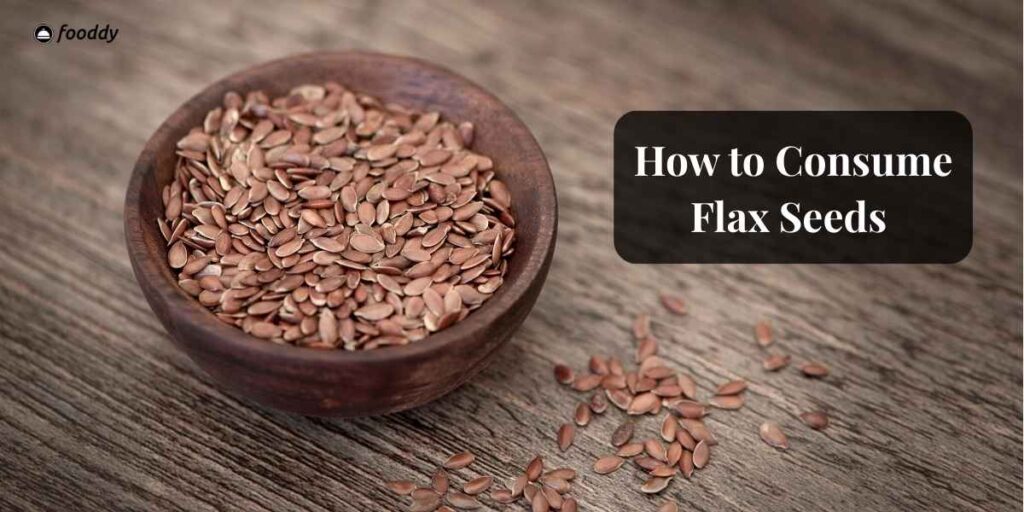Flax seeds, commonly referred to as linseeds, are among the earliest superfoods cultivated by humans, with a rich history spanning thousands of years. These tiny seeds, available in golden or brown varieties and carrying a pleasant nutty flavor, are densely packed with essential nutrients. They are a natural source of omega-3 fatty acids, plant-based protein, dietary fiber, lignans, antioxidants, and a range of vital vitamins and minerals that the body needs for overall health. In the sections ahead, we will dive deeper into the different ways on how to consume flax seeds properly, identify which forms offer the maximum benefits, uncover their special advantages for women, and understand how they can be paired with water or even incorporated using Ayurvedic principles.
What truly sets flax seeds apart is their extraordinary versatility and their wide spectrum of health benefits. Regular consumption can support digestive wellness, promote hormonal balance, strengthen heart health, and aid in effective weight management. They are particularly beneficial for those who want to feel satiated for longer hours, maintain smoother digestion, or achieve better hormonal stability. In fact, flax seeds fit seamlessly into balanced diets, making them a simple yet powerful nutritional partner.
Step-by-Step Procedure on How to Consume Flax Seeds
To get the most from flax seeds, it’s best to consume them in a form that the body can easily absorb. Begin by lightly roasting or grinding the seeds, as whole flax often passes through the system undigested. You can then add a spoonful to water, smoothies, or sprinkle it over salads and cereals. Consuming them freshly ground ensures you retain maximum nutrients while supporting digestion, heart health, and overall wellness.
Step 1: Choose High-Quality Seeds
To get the best health benefits, always start with whole, organic flax seeds—available in both brown and golden varieties. While they look slightly different, both types provide nearly the same nutritional value. Opting for organic ensures fewer chemicals and a more natural nutrient profile, giving your body cleaner and more effective nourishment.
Step 2: Grind Before Use
Since whole flax seeds have a tough outer shell, the body often cannot fully break them down, which means much of their nutrition goes unused. Grinding the seeds helps unlock their rich store of fiber, omega-3 fatty acids, and antioxidants. For the freshest results, use a clean grinder and prepare small batches so the oils inside remain stable and don’t lose potency.
Step 3: Start Small
If you’re new to flax seeds, it’s best to introduce them slowly into your diet. Begin with just one teaspoon per day to allow your digestive system to adjust to the extra fiber. Over time, you can gradually increase the intake to one or two tablespoons daily, making it easier for your body to enjoy the full spectrum of benefits without causing bloating or discomfort.
Also Read – How to Consume Chia Seeds
Step 4: Add to Your Meals
Flax seeds are easy to slip into your daily meals without much effort. A spoonful can be blended into your morning smoothie, sprinkled over a bowl of curd or porridge, or tossed onto salads and soups for some extra crunch. If you bake often, mixing flax seeds into dough for breads, rotis, or even homemade muffins is a simple way to get their goodness. You can also stir them into dals, rice, or vegetable dishes for a healthy, fibre-rich twist.
Step 5: Drink with Water
A very simple method is to mix ground flax seeds with water and drink it straight. Many people prefer having this in the morning on an empty stomach, as it can help with digestion and keep you feeling fuller for longer. It’s quick, fuss-free, and a sure way to make sure your body absorbs all the nutrients properly.
Step 6: Use as an Egg Substitute
If you’re vegan or just looking for an alternative to eggs in baking, flax seeds can be a real lifesaver. All you need to do is combine one tablespoon of flaxseed powder with about two and a half tablespoons of water. Leave it aside for 5–10 minutes, and you’ll notice it turning into a gel. This mixture can be used in cakes, pancakes, or cookies, working just like one egg in your recipes.
Step 7: Store Correctly
How you store flax seeds really affects their freshness and taste. Whole flax seeds keep well for a long time if you store them in an airtight container in a cool, dry place away from heat. But once you grind them, the oils inside can go rancid quickly. To keep ground flax seeds fresh, it’s best to store them in the fridge and try to use them within a couple of weeks. This way, you make sure you’re getting all the benefits without any off smell or taste.
Step 8: Stay Hydrated
Since flax seeds are packed with fibre, they soak up water in your digestive system. This is why you should ensure you drink plenty of fluids during the day when consuming them regularly. Staying hydrated not only prevents bloating or constipation but also helps the fiber do its job properly, leaving you light, active, and energised.
Flax Seeds Benefits for Females
Flax seeds are especially beneficial for women as they contain phytoestrogens that help maintain hormonal balance. They may ease menstrual discomfort, support smoother menopause transitions, and promote better skin and hair health. Rich in fiber and omega‑3s, they also aid digestion, heart wellness, and healthy weight management, making them a simple superfood for women’s daily diets.
1. Hormonal Balance
Flax seeds are a natural source of lignans, which act like mild plant-based estrogens in the body. They can help ease PMS symptoms, support regular menstrual cycles, and bring comfort during menopause by balancing hormones.
2. Improved Skin and Hair
Packed with omega‑3 fatty acids, flax seeds help the skin stay supple and hydrated while also reducing acne and dryness. They also strengthen hair follicles, keeping hair shiny and the scalp nourished.
3. Bone Health
Rich in calcium, magnesium, and phosphorus, flax seeds support strong bones and may reduce the risk of issues like osteoporosis, especially important for women in their 30s and beyond.
4. Heart Health
By lowering bad cholesterol and improving blood circulation, flax seeds promote better heart health. This is particularly beneficial for women who deal with long sitting hours or high stress.
5. Weight Management
The high fiber content in flax seeds helps control appetite, keeps you feeling fuller after meals, and supports healthy fat metabolism—making weight management much easier.
How to Consume Flax Seeds as per Ayurveda
In Ayurveda, flax seeds are seen as warm, grounding, and deeply nourishing—making them especially useful for balancing Vata and Kapha doshas. Here are some simple ways to use them the Ayurvedic way:
- Soak Overnight: Soak a spoonful of flax seeds in warm water overnight and drink it first thing in the morning to aid digestion.
- Mix with Ghee or Honey: Blend flaxseed powder with warm water and a little ghee or honey for enhanced nourishment.
- Add to Warm Foods: Stir into khichdi or porridge with mild spices to strengthen Agni (digestive fire).
- Avoid Cold Foods: Skip cold smoothies or raw flax in winter, as Ayurveda favors warmth.
- Moderation is Key: Stick to 1 teaspoon–1 tablespoon daily, adjusting based on individual body constitution.
How to Eat Flax Seeds with Water
One of the easiest ways to include flax seeds in your routine is by drinking them with water. This simple method is quick, effective, and highly beneficial.
Method:
- Take 1 tablespoon of ground flax seeds and stir it into a glass of warm or room temperature water.
- Give it a good mix and let it rest for about 5 to 10 minutes until it thickens a little.
- Sip it slowly, preferably first thing in the morning on an empty stomach.
Why It Works
- Helps your digestion stay on track and promotes regular bathroom trips.
- Keeps hunger at bay, so you don’t feel the urge to snack constantly.
- Gives your body a gentle detox boost.
- Supports steady, natural weight loss when you make it a habit.
Pro Tip: Add a squeeze of lemon or a pinch of cinnamon to make the taste more enjoyable and get some extra health benefits, too.
How to Consume Flax Seeds to Reduce Tummy
If the goal is to lose belly fat or reduce bloating, flax seeds can be a helpful addition to your routine.
- Morning Drink: Start your day by drinking flaxseed water on an empty stomach to boost digestion.
- Add to Salads: Sprinkle flaxseed powder over fiber-rich salads to encourage better digestion and satiety.
- Combine with Yogurt: Mix flax seeds into plain yogurt for a gut-friendly, fiber-loaded snack.
- Use in Low-Calorie Baking: Incorporate flax seeds into low-calorie muffins or whole wheat rotis to increase fiber without extra calories.
- Avoid Sugar and Oils: For best effects, steer clear of pairing flax seeds with sugary or oily foods.
Flax seeds help reduce water retention, support gut balance, and keep you feeling full, making them a natural choice for trimming down the tummy area.
Can Flax Seeds Be Eaten Raw?
Yes, flax seeds can be eaten raw, but it’s best to be cautious.
- Whole Raw Seeds: You can eat them whole, but they may pass through your system undigested unless chewed well. Grinding is a better option for nutrient absorption.
- Ground Flaxseed: This is the safest and most effective way to get all the benefits.
- Soaked Raw Seeds: Soaking helps reduce anti-nutrients like phytic acid and makes digestion easier.
- Cooking or Roasting: Light roasting can improve flavor and reduce anti-nutrients, while keeping most nutrients intact.
Eating raw flax seeds in moderation is generally safe, but overdoing it without drinking enough water might cause bloating or constipation.
Conclusion for How to Consume Flax Seeds
Flax seeds are super versatile and powerful—definitely one of the easiest things to add to your daily diet. Whether you want to help your digestion, balance your hormones, keep your heart healthy, or manage your weight, flax seeds pack a lot of benefits into a small seed.
To get the most out of them:
- Always grind your seeds before using to get all the nutrients.
- Drink them with water or add to warm foods for better absorption.
- Don’t eat too many raw to avoid tummy troubles.
- Start slow and then increase how much you take, so your body adjusts.
- Store flax seeds properly to keep them fresh and tasty.
For women, flax seeds are especially great—they support skin health, hormone balance, and give you steady energy. Adding flax seeds regularly can help with both your short-term health and long-term well-being.
FAQs for How to Consume Flax Seeds
Q1. How much flaxseed should I consume daily?
Ans: Well, start small—like a teaspoon—and once your body’s cool with it, you can slowly move up to a tablespoon or two. No rush here!
Q2. Can flax seeds help with weight loss?
Ans: Yeah, they kinda help you feel full, so you don’t snack as much. And they help your body burn fat too, which is a win.
Q3. Are flax seeds good during periods?
Ans: For many women, yes. They can help with the cramps and mood swings. Worth trying!
Q4. Can I take flax seeds at night?
Ans: Sure, you can. But most folks find taking them in the morning works better for digestion and cleanup.
Q5. Should flax seeds be eaten raw or roasted?
Ans: Either is okay, but roasting or grinding usually makes them easier on your stomach.
Q6. Are flax seeds safe for pregnant women?
Ans: Generally yes, but better to chat with your doc just to be safe.
Q7. Can flax seeds improve skin and hair health?
Ans: Definitely. The good fats and antioxidants they have keep your skin glowing and your hair soft.
Q8. How do flax seeds help in constipation?
Ans: They’re full of fiber, so they help get things moving, especially if you drink enough water with them.
Q9. Can I mix flax seeds in milk?
Ans: Yep, toss some in warm milk or your smoothie—it’s an easy way to add fiber.
Q10. How long does it take for flax seeds to show effects?
Ans: It varies, but most notice better digestion and less hunger after about a week or so.







